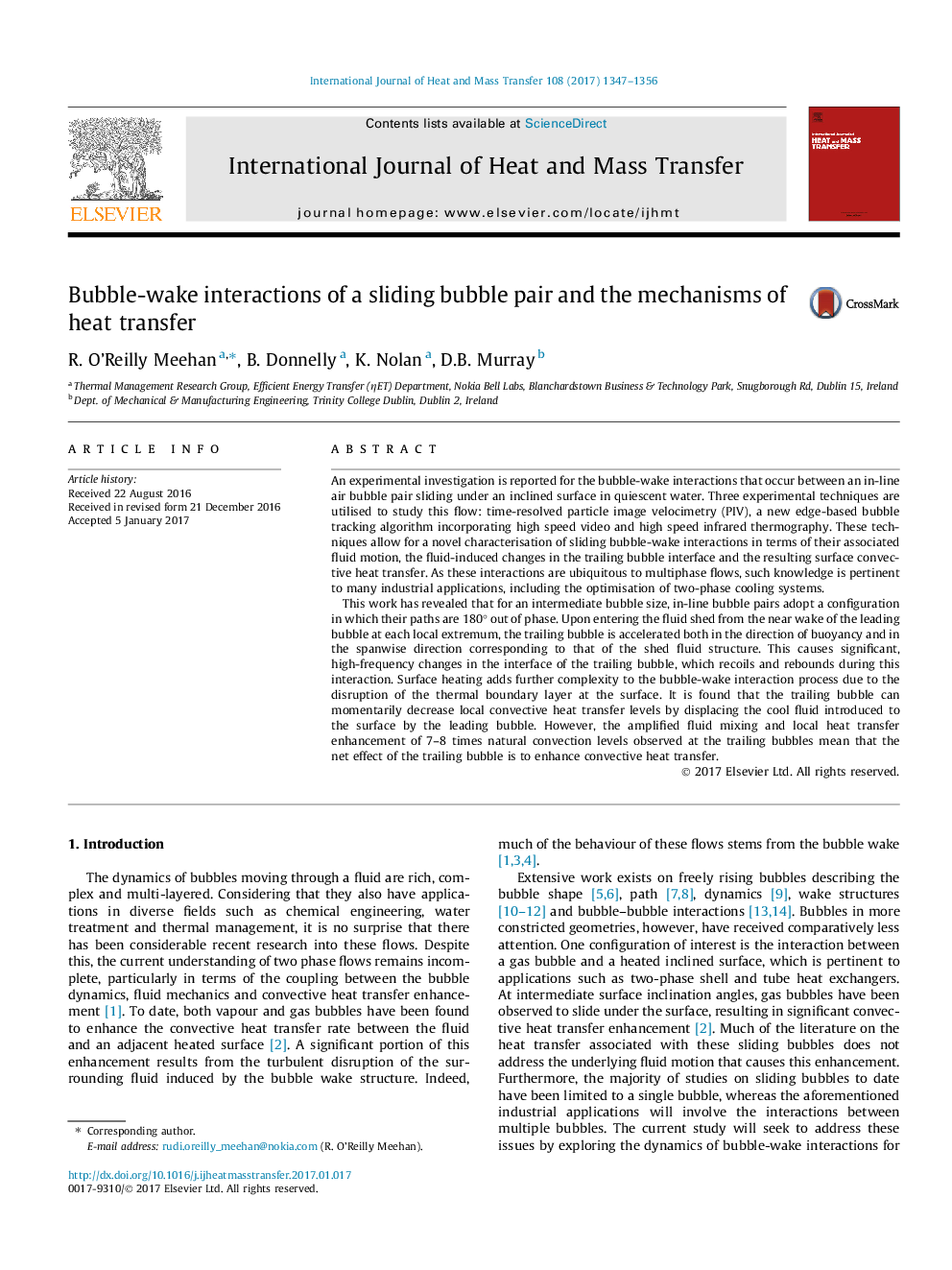| Article ID | Journal | Published Year | Pages | File Type |
|---|---|---|---|---|
| 4994365 | International Journal of Heat and Mass Transfer | 2017 | 10 Pages |
Abstract
This work has revealed that for an intermediate bubble size, in-line bubble pairs adopt a configuration in which their paths are 180° out of phase. Upon entering the fluid shed from the near wake of the leading bubble at each local extremum, the trailing bubble is accelerated both in the direction of buoyancy and in the spanwise direction corresponding to that of the shed fluid structure. This causes significant, high-frequency changes in the interface of the trailing bubble, which recoils and rebounds during this interaction. Surface heating adds further complexity to the bubble-wake interaction process due to the disruption of the thermal boundary layer at the surface. It is found that the trailing bubble can momentarily decrease local convective heat transfer levels by displacing the cool fluid introduced to the surface by the leading bubble. However, the amplified fluid mixing and local heat transfer enhancement of 7-8 times natural convection levels observed at the trailing bubbles mean that the net effect of the trailing bubble is to enhance convective heat transfer.
Related Topics
Physical Sciences and Engineering
Chemical Engineering
Fluid Flow and Transfer Processes
Authors
R. O'Reilly Meehan, B. Donnelly, K. Nolan, D.B. Murray,
